Logical questions for a child of 6 years. Children's tasks-jokes

Development of attention and ingenuity contribute joke tasks, puzzlescaution the child against hasty and unreasonable conclusions. They should not be solved as usual tasks using one or another arithmetic operation. These tasks should encourage children to reason, think, find the answer, using the existing knowledge.
By teaching the child to listen carefully to the condition of the problem, it is possible to propose a joke problem in which there are numerical data, but no arithmetic should be performed.
It’s not always easy for a child to find the answer, realizing that task with a "secret." Let the adult be pleased only by the fact that the child will not rush to answer, but try to think, reason, give various arguments and disprove himself. Help him to find the right way of reasoning.
Using joke tasks and intelligence tasks can diversify and revitalize activities with children. In addition, tasks of this kind can be used during ma-thematic leisure, fun meetings of pre-school experts, KVNov. To conduct one lesson with children, you can take one or two tasks, and in mathematics leisure you should include no more than five or six tasks of varying complexity. Application mathematical material outside classes with the whole group of children it is advisable when children are prepared from this point of view.
JOKE TASKS, PUZZLE,
TASKS ON CONFORMITY.
9 ships sailed in the sea. 2 steamer moored to the pier. How many ships are in the sea? (9 steamers.)
The room has 4 corners. In every corner was a cat. Opposite each cat - 3 cats. How many cats are in the room? (4 cats, in every corner of the cat — d show on visual material.)
How to bring water in the sieve? (When the water freezes, it turns into ice.)
There were 7 brothers, each brother had one sister. How much was the man going? (8 people).
What kind of dishes can not eat anything? (From empty.)
In the gym hanging rope. The boy rose but he was 3 m and reached the middle. How long is the rope? (6 m.)
Suddenly it started to rain. However, Tanya, Sasha, Lena are not soaked. Why? (They watched the rain through the window; everyone had an umbrella or raincoat.)
The animal has 2 right legs, 2 left legs, 2 legs in front, 2 behind. How many legs does an animal have? (4 legs.)
The shoemaker decided to fix 2 pairs of shoes. On each cab bow he will fill the taps, he will beat each taps with 2 nails. How many nails and nails will he need? (4 heels, 8 nails.)
The water in the kettle boils in 10 minutes. Alyosha set a tea-nick at 8 o'clock. When can he drink tea? (10 minutes after putting, or at 8 h 10 min.)
A bucket with snow was brought to the room at 5 o'clock. At 6 o'clock the snow in the bucket melted and turned into water. How long does the snow melt? (For 1 hour)
At 10 o'clock the baby woke up. When did he go to bed if he slept for 2 hours? (At 8 o'clock)
Kostya poured together sand from 3 piles, and Masha poured together sand from 4 piles. How many piles of sand turned out? (2 piles, if each is his own, or 1 large, if the children have dumped all the sand together.)
The children measured the length of the beds in steps. Kostya decided by eye that the length of the bed is 8 steps. Tanya measured with steps, she got 10 steps, Andrew - 7 steps. Which of the children measured correctly? (Each of those who measured, rights in their own way, since each has its own step was taken as a conditional measure. They had to agree on a single measure or measure the length of the beds with a ruler, then they would get an exact count).
A bricklayer worked at a construction site. On the first day of work, he built 2 twenty-story houses. On the second day - 1 twenty-storey house. How many twenty-story houses did a bricklayer build in two days? (One mason could not build so quickly.)
How many nuts are in an empty glass? (The glass is empty, so there is nothing in it.)
9 sharks sailed on the sea. They saw a shoal of fish and dived and depth. How many sharks swam in the sea? (9 sharks, only they dove.)
In the vase - 3 tulips and 7 daffodils. How many vase tulips? (There were 3 tulips in the vase.)
7 boys cleared one path in the garden. How many tracks have boys cleared? (7 tracks.)
2 brothers drew on 2 drawings as a gift to the grandfather. How many drawings did grandpa get? (4 pictures.)
In a barrel, 10 spoons of honey. How many children can this honey respond?
(Children should pay attention to what it doesn’t say by how much honey each will receive. After that, they must calculate how many children the honey will eat, if everyone gets 1 spoon (10), half a spoon (20), 2 spoons ( five).)
In a jug — 10 mugs of milk. How many babies are enough milk? (Solved in the same way as problem 32.)
Sister and brother got 4 apples. Sister ate 3 apples, brother - 2 apples. Who has more apples? (The one who ate less.)
Sister is 4 years old, brother is 6 years old. How old will your brother be when your sister turns 6? (It will take 2 years, it means that my brother will be 8 years old.)
2 brigades sowed peas. The first brigade sowed 4 beds of peas, and the second - so much and another half. Which team became the winner? (The second, because she sowed as much as the first, and more than that half a dozen).
Goose weighs 2 kg. How much will he weigh if he stands on one leg? (2 kg.)
One donkey was carrying 10 kg of sugar, and another donkey was carrying 10 kg of cotton wool, whom was the luggage heavier? (Poklazh both are the same - 10 kg each.)
Grandma knitted scarves and mittens for her grandchildren. In total, she knitted 3 scarves and 6 mittens. (How many grandchildren did the grandmother have? (3 grandchildren - explain the answer.)
Near the dining room, where skiers had lunch, who came from the course, there were 20 skis, and 20 sticks were stuck in the snow. How many skiers went camping? (10 skiers - to show how to read, on visual material.)
Children sculpted snowman. After walking on the battery, 14 wet mittens went dry. How many children sculpted snowman? (7 de-tei - explain the answer on visual material.)
From under the gate you can see 8 cat's paws. How many cats are there in two? (There are 4 cats in the courtyard - explain the answer to visual material.)
8 squirrel tails peeped out of the hollow. How many bel-chat sat in the hollow? (8 squirrels - explain.)
The blacksmith shod three horses. How many horseshoes did he have to make? (12 horseshoes - show on visual material).
The pencil was cut into 3 parts. How many cuts made? (They made 2 cuts.)
The rope was cut in 5 places. How many pieces came out! (It turned out 6 parts.)
Cook poured rice equally in 2 cups. Then from one glass he poured the rice into the pan. Where is more rice: in the second glass or in a saucepan? (Equally, because the glasses were equally.)
One apple was divided equally between 2 girls, and the second was equally divided between 4 boys. Which of the children got the most, what part each got? (Each girl received one second part from the apple, and the boys - one quadruple part from the apple. One second part is more than one fourth)
On the table stood a full glass of kefir, and next to it was a glass filled only half. How to divide kefir equally between 3 children? (Everyone should get half a cup of kefir.)
Grandfather, grandmother, granddaughter, Bug, cat and mouse pulled, pulled, and finally pulled out a turnip. How many eyes saw a turnip? (12 eyes.)
It was snowing at 12 at night. Could it be a few days at the same time sunny weather? (At the same time, it means that at 12 o'clock at night, there can be no sunny weather.)
There were 9 passengers on the bus. At the bus stop, all but 3 passengers got off. How many passengers are left on the bus. How many passengers are out? (There are 3 passengers left, 6 pas-sajirs are out.)
Children gathered in the park an autumn bouquet. It had 5 maple, 4 birch, 2 oak, 1 aspen leaf. How many different trees were there in the bouquet? (With 4 trees.)
There were 3 little pigs. One - in front of two, one - between two, and one - behind two.
How were the pigs going? (One after another.)
Erofeeva T.I. Math for preschoolers. - M .: Enlightenment, 1992.-191s.
Tasks for ingenuity for elementary school
Golovina Tatyana Sergeevna, primary school teacherDear colleagues, I offer you a selection of tasks for ingenuity for use in class with pupils of primary school age.
I believe that from a very young age it is necessary to offer children similar tasks. Such tasks are usually very short in formulation. In order to guess them, the child must have a developed outlook, knowledge of the surrounding world. You need to start teaching with riddles. They teach the imaginative thinking outside the box that promotes the development of logic and ingenuity. It is necessary to offer children different puzzles and not be in a hurry to explain the answer to them. At school, the collective form of work is suitable for solving such problems - in pairs, in groups. And the puzzle will solve “one head is good, and two is better,” and learn how to work in a team. Well develop ingenuity rebuses, charades.
__________________________________________
1. There is an apple on the table. He was divided into 4 parts. How many apples are on the table? The answer is: one apple
2. What are the two numbers that have the number of digits equal to the number of letters that make up the name of each of these numbers. Answer: One hundred (100) and one million (1,000,000)
3. How many months in a year have 28 days? Answer: All months
4. The dog was tied to a ten-meter rope, and walked two hundred meters. How did she do it? Answer: Her rope was not tied to anything.
5. What can be seen with closed eyes? Answer: Dreams
6. What should I do when you see a green man? Answer: Cross the street (this is a drawing on a green traffic light)
7. There is a road on which only one car can pass. Two cars are driving along the road: one from the mountain, the other downhill. How do they disperse? Answer: They both go down.
8. Name five days without naming numbers (1, 2, 3, ..) and names of days (Monday, Tuesday, Wednesday ...) Answer: The day before yesterday, yesterday, today, tomorrow, the day after tomorrow
9. How to say: “I do not see the white yolk” or “I do not see the white yolk”? Answer: Yolk is usually yellow.
10. Is it possible to light a regular match under water so that it burns to the end? Answer: Yes, in a submarine
11. On the table in a row are 6 glasses. The first three are empty, and the last three are filled with water. How to make empty glasses and full alternate with each other, if you can touch only one glass (you can not push a glass with a glass)? Answer: Take the fifth glass, pour the contents into the second glass and put the glass in place.
12. From which dishes can not eat anything? Answer: From empty
13. You and I, yes we are with you. How many of us? Answer: Two
14. How to form a triangle on the table with just one stick? Answer: Put it on the corner of the table.
15. Which question cannot be answered "yes"? Answer: Are you sleeping?
16. When can the net draw water? Answer: When the water freezes and turns into ice.
17. What is the end of the day and night? Answer: Soft sign
18. Peter and Leon make a flower garden of square shape. Petya said “Let’s make the side of our square 12 m less than its perimeter”. What will be the side length of this flower garden. Answer: 4 meters
19. A son with a father, yes a son with a father, and a grandfather with a grandson. How many are there? Answer: 3 people
20. Grew 4 birch. On each birch 4 large branches. On each large branch of 4 small. On each small branch of 4 apples. How many apples are there? Answer: None. On the birch do not grow apples
21. Vasina's father's name is Ivan Nikolaevich, and the grandfather is Semen Petrovich. What is the patronymic name of Vasina's mother? Answer: Semenovna
22. Three brothers have one sister. How many children are in a family? Answer: 4 children
23. In which month does the talkative girl speak the least? Answer: In February
24. Two men approached the river at the same time. The boat on which you can cross, can withstand only one person. And yet without help, everyone crossed over on this boat to the other side. How did they do it? Answer: they came to different banks of the river.
25. What is yours, but others use it more often than you? Answer: Your name
26. How to find last year's snow? Answer: Go outside immediately after the beginning of the new year.
27. The boy in the box had 7 flies. For two flies, he caught two fish. How many fish does a boy catch using the rest of the flies? The answer is: unknown.
28. In humans - one, in a cow - two, in a hawk - none. What is it? Answer: Letter O
29. Sits man, but you can not sit in his place, even if he gets up and leaves. Where is he sitting? Answer: On your lap
30. What kind of stones in the sea there? Answer: Dry
31. Can a rooster call himself a bird? No, he can't talk.
32. What disease on earth, no one was sick? Answer: Marine
33. Is it possible to predict the score of any match before it starts? Answer: Yes, 0 - 0
34. On the garden sit 6 sparrows, another 5 flew to them. The cat crept up and grabbed one. How many birds are left in the garden? Answer: not at all. The rest of the birds flew away.
35. What can be cooked but not eaten? Answer: Lessons
36. What gets a third more if you put it upside down? Answer: Number 6
37. Which knot cannot be untied? Answer: Railway
38. What city flies? Answer: Eagle
39. What fish bears the name of a person? Answer: Carp
40. What are the cows in front, and the bull behind? Answer: Letter K
41. What is the worst river? Answer: Tiger
42. What does not have the length, depth, width, height, and can be measured? Answer: Temperature, time
43. What are all the people on earth doing at the same time? Answer: Get older
44. Two people played checkers. Each played five games and won five times. Is it possible Answer: Both people played different games with other people.
45. How can an abandoned egg fly three meters and not break? Answer: It is necessary to throw an egg more than three meters, then the first three meters it will fly by.
46. The pencil was placed on the floor and asked several people to jump over it.
But no one could do it. Why? Answer: He was laid close to the wall.
47. The last house on one of the sides of the street has number 34. How many houses are on this side of the street? Answer: 17 houses
48. A man was driving a big truck. The headlights on the car were not lit. There was no moon either. The woman began to cross the road in front of the car. How did the driver manage to see her? Answer: It was a bright sunny day.
49. After a daily duty at the hospital, the doctor decided to sleep and lay down at 9 o'clock in the evening. He was supposed to be in the hospital again by 11 am. Therefore, he set the alarm for 10 hours. How much time will pass before the alarm bell? Answer: 1 hour
50. Field plowed 6 tractors. 2 of them stopped. How many tractors are in the field? The answer is: 6 tractors
51. One egg should be cooked for 5 minutes. How long does it take to cook 6 such eggs? Answer: 5 minutes
52. What kind of comb will you not comb your head? Answer: Petushin.
53. What do they throw when they need it, and raise it when there is no need for it? Answer: Anchor.
54. You are sitting on the plane, in front of you is a horse, behind the car. Where are you at? Answer: On the carousel
55. The family has two children. Sasha is Zhenya's brother, but Zhenya Sasha is not a brother. Could this be? Who is Zhenya? Answer: Sister
56. What notes can measure the distance? Answer: Mi-la-mi.
57. What will not enter the biggest pot? Answer: Its cover.
58. Who gets taller when he sits down? Answer: Dog.
59. How many times will the number increase if you assign the same figure to it? Answer: 11 times.
60. Italian flag in red, white and green. What kind of sectional berry helped the Italians to choose these colors? Answer: Watermelon.
Interesting tasks for children and their parents
This material may be of interest to teachers of preparatory groups, primary school teachers, parents who are engaged in the formation of non-standard thinking in children. Tasks are available for children of preschool age, interesting for schoolchildren and even adults.Tatyana Pochayeva Anatolyevna, pedagogical psychologist of MBDOU "Kindergarten No. 2", Konakovo
Purpose: development of child's abilities
Tasks:
- to interest the child in solving non-standard tasks;
- develop figurative and logical thinking;
- to offer material for leisure activities in the family.
Working with children, I always tried to develop creative thinking outside the box in them. For this purpose, tasks that can be solved are not enough to be able to add or subtract numbers or to be able to count to one hundred. Finding such tricky puzzles is half the battle, making children interested in solving them is more difficult. It is difficult because the classes are time-regulated very tightly, they are not designed to solve non-standard tasks. I still manage to do something, but I always want more.
In the last school year, at the parents' meeting in the preparatory group, I proposed an option: at the end of the week, each child will receive an envelope with a task. This task needs to be solved within a week and in an envelope send me an answer. The point is voluntary, you want to participate - do not want your will. Of course, they wanted everything, but after two months, those who wanted to diminished, because often the parents (!) Themselves did not understand how to solve this or that problem. And it is very bitter. Only one girl reached the finish, which was quite predictable.
So, the simplest task that I offered to the children in the classroom was: “How to divide the 3 apples lying in the basket between the three girls so that each girl gets 1 apple and one apple left in the basket?” The children immediately begin to offer 2 apples cut, but it does not meet the condition of the problem, which states that each girl should get a whole apple. Then I pick up a basket with 3 apples and ask some of the children to fulfill the condition of the task - to divide the apples. At this moment, there is an insight - we pick up one apple with the basket!
1. Misha returned from fishing pleased.
- How many fish caught? - asked his comrades.
- I will not say. But he ate both of them.
How many fish did Misha catch?
This is a very easy task, but when the child does not hear the usual numbers, he does not first understand how to solve it.
2. Marina had 7 sweets. She gave 2 candies to her sister Kate, who also had candies. After that, the chocolates of the sisters became equal. Think how many candies did Katya have at first?
It is also one of the simple tasks, but 2-3 people can solve it immediately in class, the rest do not have time to figure it out.
3. How many squares should I take to glue the cube, sticking 1 square on each side?
4. 3 people waited for the train for 3 hours. How much time did everyone wait?
5. Three fishermen eat three fish in three days. How many days will five fishermen eat five fish?
Decision:
If 3 fishermen eat 3 fish in 3 days, then 1 fisherman eats 1 fish in 3 days. Therefore, 5 fishermen will eat 5 fish in the same 3 days, and not 5, as children and adults often answer.
6. 2 hens in 2 days laid down 2 eggs. How many eggs will be laid 4 hens in 4 days.
Decision:
2 hens in 2 days carry 2 eggs, therefore, 1 hen in 2 days can carry 1 egg. In 4 days, 1 chicken will lay 2 eggs, and 4 hens will lay 8 eggs in 4 days.
Answer: 8 eggs.
7. One Winnie the Pooh eats for 1 hour 1 jar of honey. How many Winnie the Poohs in 5 hours will eat 5 cans of honey?
Decision:
for 1 hour Vini eats 1 jar of honey, therefore, in 2 hours he will eat 2 cans, for 3 - 3 cans, etc.
Answer: one Winnie the Pooh will eat 5 cans of honey in 5 hours.
8. Vanya lives in a 12-story building, on the 9th floor, if you count from above. What floor does Vanya live on?
Decision:
If you propose to solve this problem for a preschooler, then it is best to ask him to draw a 12-story house and count the floors in the reverse order. If the child is already in school, the solution is available in his mind without relying on the drawing. It turns out, if you count from the bottom up, after the 9th floor upwards there will be three more floors: the tenth, eleventh, twelfth. If we count from the top down, then all the same after the ninth floor, on which Vanya lives, there will be three more: the third, the second, the first. Therefore, Vanya lives on the 4th floor.
9. Zabyvalka and Putalka bought several pairs of boots at a shoe store, and the total number of boots turned out to be a single number. When the gnomes returned home, Putalka began to make purchases. He did it so cunningly that at the end of the division he had 8 more boots than his friend. How many boots did the surprised Zabvalka get?
Decision: to solve this problem, the child must know what the words "pair" and "single digit" mean. Dwarfs could not buy 10 boots, because the number 10 is a two-digit one. They could not buy 9 boots, because shoes are always sold in pairs. If they bought 8 boots, then all these boots went to Puntka, and Zabyalka did not get anything.
10. Gilt weighs 2 kg and still half a pig. How much does piggy weigh?
Decision:
The gilt weighs 2 kg and still half a pig. We understand that the weight of the two halves is equal to the weight of the mumps; if one half weighs 2 kg, then the whole mumps is 4 kg.
11. The elevator rises to the third floor in 6 seconds. How many seconds will he go up to the fifth floor?
Decision:
in 6 seconds the elevator overcomes two flights - from the first to the second floor and from the second to the third. Therefore, one flight of the elevator passes in 3 seconds. To get to the fifth floor, you need to drive 4 flights. It will take 12 seconds.
12. Adler goes to the cage with a tiger. Every time he takes 2 steps forward, the tiger roars and the dwarf retreats 1 step back. How long does it take to reach the cage, if it is 7 steps away, and 1 step Does the Traveler do in 1 second?
Decision:
to solve this problem, use a picture from which it will be clear that moving 2 steps forward and 1 step back, the Traveler spends 3 seconds to get one step closer to a cage with a tiger. But having come closer to 5 steps in 15 seconds, he takes the last steps in 2 seconds and turns out to be in a cell.
Answer: In 17 seconds, the Traveler will reach the cage.
13. Once upon a time there was a Serpent Gorynych. He was very picky about food. His right head did not like fruit and could not tolerate cutlets. His left head could not bear pears. Pears, ice cream and cutlets were served for lunch. What will each head of Gorynych choose for lunch?
Decision:
the right head will choose ice cream, the left - cutlets, medium, as the most picky, head will get pears.
14. In two wallets there are 4 coins, and in one purse there are twice as many coins as in the other. How is this possible?
Decision:
To make this happen, we put two coins in each wallet, and then we put one into the other. It turns out that it now has 4 coins, which is 2 times more than in another wallet.
15. A small military unit approached the river. The bridge is broken, and the river is deep. How to be? Suddenly, the officer noticed two boys playing in a boat by the river. The boat is so small that only one soldier or two boys can cross it - no more! However, all the soldiers crossed the river on this particular boat. How did they manage to do this?
Decision:
first both boys are transported in the boat. One of them remains on the other bank, and the second boy returns and gives the boat to one of the soldiers. He crosses the river. The boy, waiting for him on the shore, takes the boat and swims to the rest. Then the cycle repeats until all the soldiers cross.
Good day, dear friends! Do you remember what grades you studied at school? I remember. I have no triples in my certificate. But during any school year there were triples, twos, and even colas sometimes happened. So I think, in whom is Alexandra, my daughter, such? A student on the board of honor hangs! Apparently, those additional exercises that we do with it are bearing fruit.
Lesson plan:
Exercise 1. We connect the incompatible

Very interesting exercise! Useful not only for children, but also for adults. This exercise is used as a test at castings of radio presenters. Imagine, you come to the casting, and they tell you: “Come on, friend, connect us a chicken with a pillar”. In all seriousness, they say so!
The point is precisely in this, you need to connect two completely unrelated concepts. Radio presenters need this so that during live broadcasts you can quickly and beautifully create liner songs for easy transitions from one topic to another.
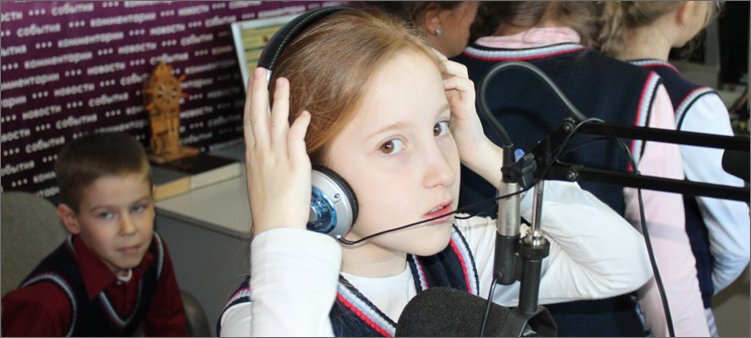
Well, the kids are suitable for the development of creative, creative, fast thinking.
So how do you connect a chicken with a pillar? There are many options:
- A chicken walks around a pillar.
- The chicken was blind, walked and crashed into a pole.
- The chicken was strong, hit the pole, and he fell.
- The pillar fell right on the chicken.
Want to practice? Good. Connect:
- chamomile with milk;
- headphones with jellyfish;
- boots with the moon.
Exercise 2. Wordbreakers
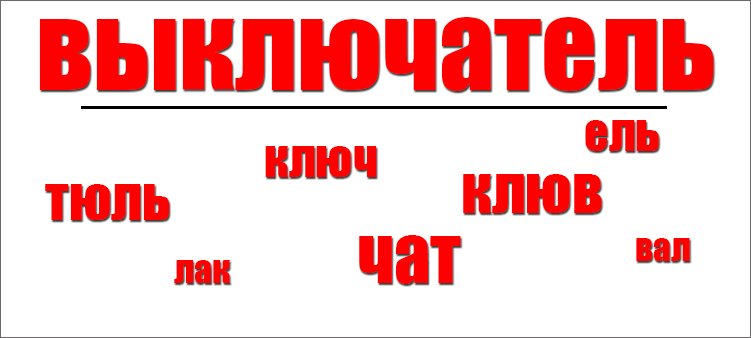
If in the previous exercise we connected, then in this we will break, one long word into many short, consisting of letters of a big word. According to the rules, if a letter occurs in a long word 1 time, then it cannot be repeated in short words twice.
For example, the word "switch" is divided into:
- tulle;
- key;
- beak.
I no longer see the options, and you?
You can break any long words, for example, “holiday”, “picture”, “towel”, “polar explorer”.
Exercise 3. Rebus
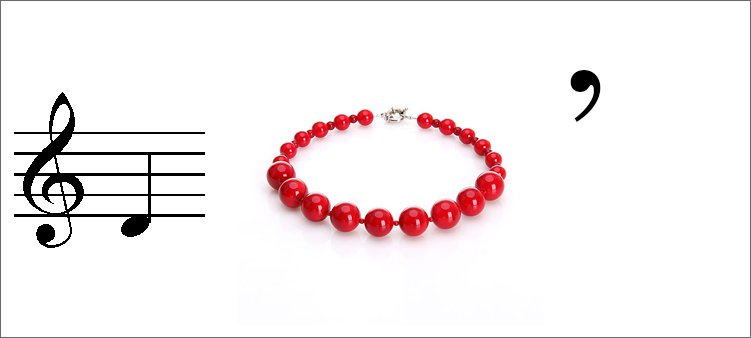
Solving puzzles helps to think outside the box, creatively. Teaches a child to analyze.
The rebuses may contain images, letters, numbers, commas, fractions placed in a very different order. Let's try together to solve a few simple rebuses.
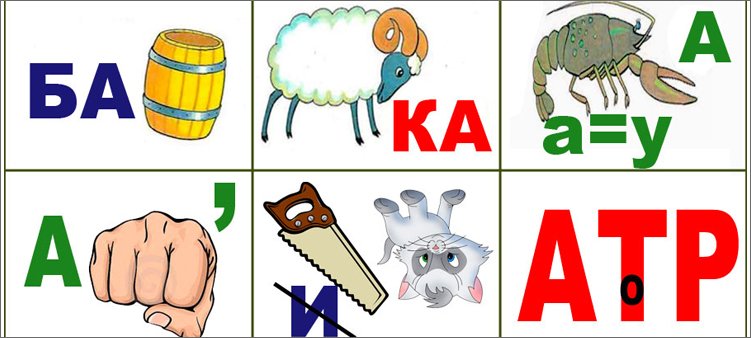
- At first, we see the syllable “BA” and “barrel”. Connect: BA + Barrel = Butterfly.
- The second principle is the same: Baran + KA = Bagel.
- The third is more complicated. Drawn cancer, and next to "a = y." So in the word cancer, the letter "a" must be replaced by the letter "y", we get "hands". To this we add one more “a”: hands + a = hand.
- The fourth rebus with a comma. Since the first is the letter "A", the word-otgadka it begins. Then we see the "fist", after the picture is a comma, it means that the last letter should be taken away from the word "fist". We get the "Kula". Now we combine everything together: A + kula = shark.
- The fifth rebus is difficult at first sight. It is necessary to remove the letter “and” from the word “saw”, and read the word “cat” backwards. As a result, we obtain: plat + current = scarf.
- The sixth, fully alphabetic rebus. With the first and last letters, everything is clear, but what about the middle? We see the letter "o", drawn in the beech "t", so let's say "in t o". We connect: A + VTO + P = AUTHOR.
Have you trained? Now try solving the rebus yourself.
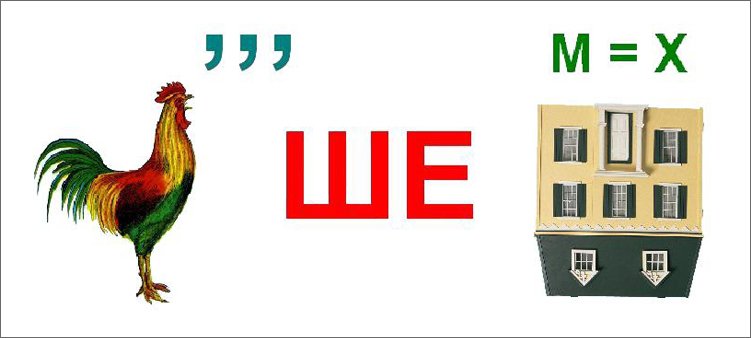
Your answer choices can be shared in the comments. You will find many different rebuses in children's magazines and.
Exercise 4. Anagrams

Is it possible to turn an orange into a spaniel and vice versa? "Easy!" - Anagram lovers will answer. Even a magic wand is not needed.
Anagram is a literary device that consists in rearranging the letters or sounds of a certain word (or phrases), which results in another word or phrases.
It is also easy to sleep turns into a nose, a cat into a current, and a linden into a saw.
Well, let's try? Let's make it so that:
- "Carriage" flew to the stars;
- The “word” has grown on the head;
- "Lace" learned to fly;
- The atlas became edible;
- "Pump" settled in the forest;
- "Mote" became transparent;
- "Roller" put on the table before dinner;
- "Bun" learned to swim;
- “Daisy” was spinning around the lantern on summer evenings;
- "Park" could not live without water.
Exercise 5. Logical problems

The more logical puzzles you solve, the stronger your thinking becomes. It is not for nothing that they say that mathematics is gymnastics for the mind. Indeed, when solving some of them, you directly feel how the brain moves.
Let's start with those that are simpler:
- Kohl and Vasya solved puzzles. One boy decided at the blackboard, and the other at the desk. Where did Vasya solve the puzzles, if Kolya didn't solve at the blackboard?
- Three old grandmothers live in the same staircase, on the third, fifth and seventh floors. Who lives on what floor, if Grandma Nina, lives above Grandma Vali, and Grandma Galya, below Grandma Vali?
- Yura, Igor, Pasha and Artem came to the finish line in the top four in the race. Who took what place? It is known that Yura ran not the first and not the fourth, Igor ran after the winner, and Pasha was not the last.
And the following three tasks Sashulya brought with the mathematical Olympiad. These are tasks for the third grade.
“A gardener planted 8 seedlings. Of all but four, pear trees have grown. On all pear trees except two pears grow. Pears from all fruit-bearing pear trees, except for one, are tasteless. How many pear trees are pears? ”

“Vasya, Petya, Vanya wear ties only in one color: green, yellow and blue. Vasya said: “Petya does not like yellow color”. Peter said: "Vanya wears a blue tie." Vanya said: "You are both deceiving." Who prefers what color if Vanya never lies? ”
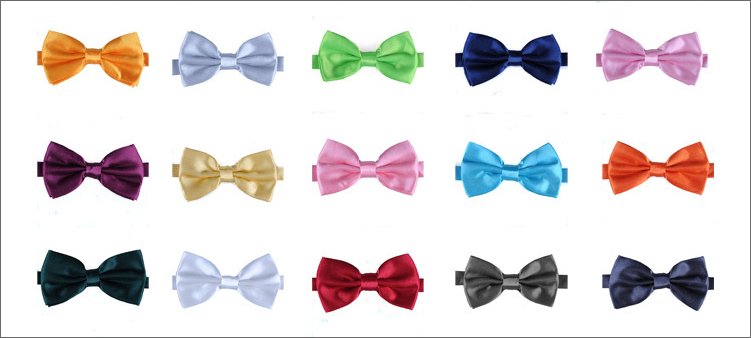
And now attention! The challenge of increased complexity! "Backfilling", as they say. I could not solve it. Long tormented, and then peered into the answers. She, too, with the Olympics.
“The traveler must cross the desert. The transition lasts six days. The traveler and the porter who will accompany him can take with them a supply of water and food for one person for four days each. How many porters will a traveler need to fulfill his plan? Specify the smallest number ".

If on any puzzles you fall asleep, please contact, I will help)
Exercise 6. Matchstick puzzles
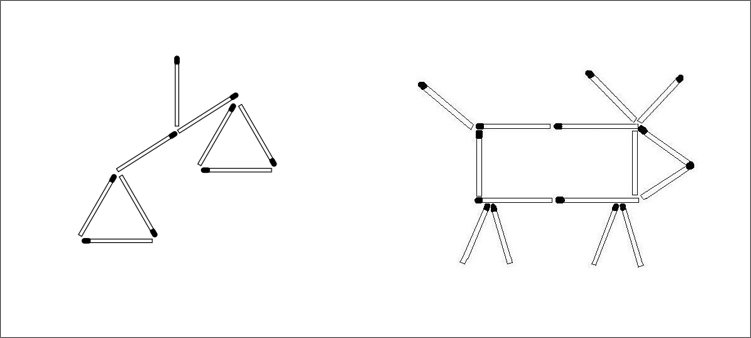
Matches for children is not a toy! A means to train thinking. For security reasons, I suggest replacing matches with counting sticks.
These simple little sticks make very difficult puzzles.
To begin with, we shall:
- fold two identical triangles from five sticks;
- from seven sticks two identical squares;
- remove three sticks to make three identical squares (see picture below).
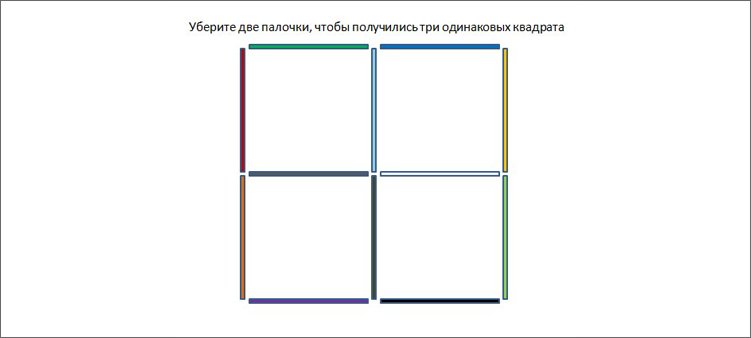
Now more difficult:
Move the three sticks so that the arrow flies in the opposite direction.

The fish also needs to be turned to the other side, shifting only three sticks.
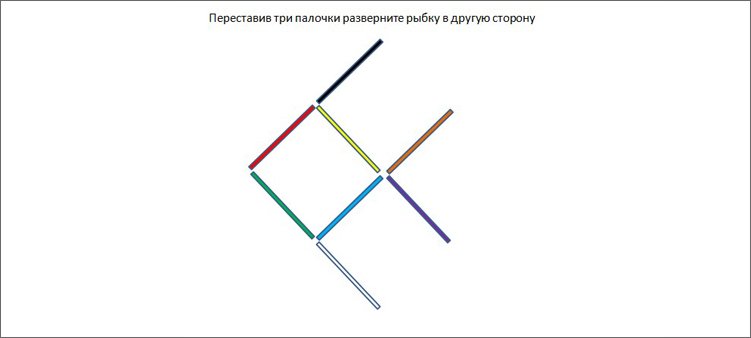
After placing only three sticks, remove the strawberry from the glass.

Remove two sticks to make two equilateral triangles.
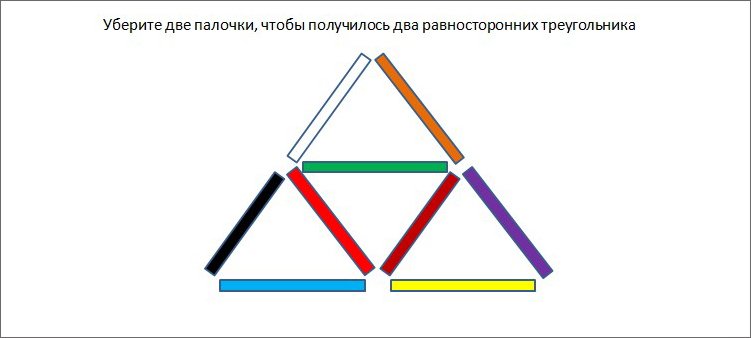
Answers can be peeped at the end of the article.
Exercise 7. Truth and lie

Now let's work on Sherlock Holmes! We will seek truth and discover falsehood.
Show the child two pictures, on one of which draw a square and a triangle, and on the other a circle and a polygon.
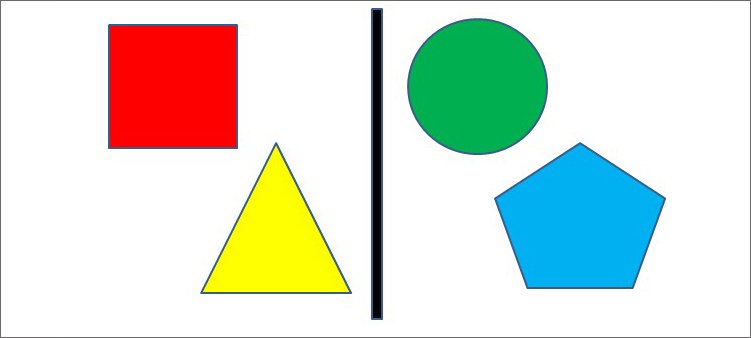
And now offer cards with the following sayings:
- some figures on the card are triangles;
- there are no triangles on the card;
- there are circles on the card;
- some figures on the card are squares;
- all the figures on the card are triangles;
- there are no polygons on the card;
- there is not a single rectangle on the card.
The task is to determine whether these statements are false or true for each picture with figures.
This exercise can be performed not only with geometric shapes, but also with images of animals. For example, put a cat, a fox and a squirrel in the picture.
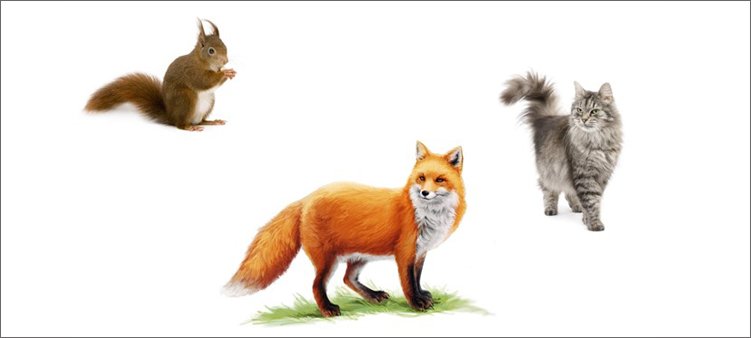
Sayings may be as follows:
- all these animals are predators;
- in the picture there are pets;
- all animals in the picture can climb trees;
- all animals have fur.
Pictures and statements to them can be selected independently.
Exercise 8. Instruction

We are surrounded by a variety of subjects. We use them. Sometimes the instructions that are attached to these items, we do not pay any attention. And it also happens that there are simply no instructions for some very necessary subjects. Let's fix this misunderstanding! Write the instructions yourself.
Take, for example, a comb. Yes, yes, the usual comb! That's what happened with Alexandra.

So, instructions for using the comb.
- The hairbrush is a device for making hair smooth and silky, made of plastic.
- Use a comb should be with increased shaggy and curly.
- In order to start combing go to the comb, gently take it in your hand.
- Stand in front of the mirror, smile, bring the comb to the roots of the hair.
- Now slowly lead the comb down to the ends of the hair.
- If on the way of the comb there are obstacles in the form of nodules, then swipe the comb with it several times with weak pressure, while you can cry out a little.
- Each hair strand should be treated with a comb.
- Combing can be considered complete when the comb on the way does not meet a single knot.
- After the combing is completed, it is necessary to rinse the comb with water, put it in a special place for it.
- If the comb has broken off the clove, you need to throw it in the trash.
- If the comb has broken off all the teeth, send it behind the tooth.
Try to write instructions for the pan, or slippers, or glasses case. It will be interesting!
Exercise 9. We make up the story
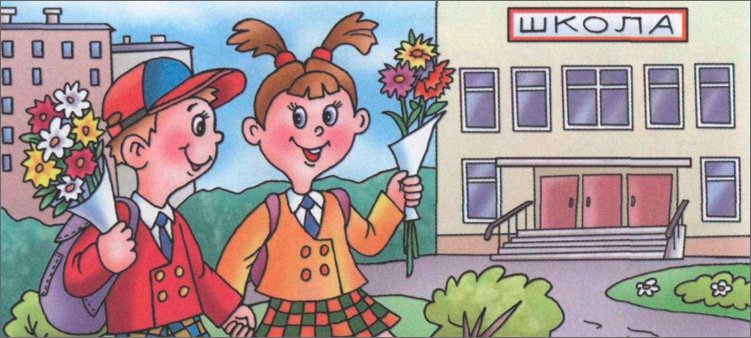
Stories can be made in different ways, for example, by a picture or on a given topic. This, by the way, will help. And I suggest you try to make a story based on the words that must be present in this story.
As always an example.
The words are given: Olga Nikolaevna, poodle, glitter, turnip, salary, gray hair, castle, flood, maple, song.
That's what happened with Sasha.
Olga Nikolaevna walked down the street. On a leash she led her poodle Artemon, the poodle was all brilliant. Yesterday he broke the lock on the locker, got to the box with sparkles and poured them on himself. And Artemon gnawed the pipe in the bathroom and made a real flood. When Olga Nikolaevna came home from work and saw it all, gray hair appeared in her hair. And now they were going for a turnip, because turnips soothe the nerves. And turnip was expensive, cost half a salary. Before entering the store, Olga Nikolaevna tied a poodle to a maple and, singing a song, went inside.

Now try it yourself! Here are three sets of words:
- Doctor, traffic light, headphones, lamp, mouse, journal, frame, exam, janitor, clip.
- First grader, summer, hare, button, gap, bonfire, velcro, beach, plane, hand.
- Konstantin, jump, samovar, mirror, speed, sadness, tripping, ball, list, theater.
Exercise 10. restore order
![]()
We already worked as detectives. Now I propose to work as police officers. The fact is that the words in famous proverbs and sayings violated order. We will fight against violators of order. Try to arrange the words as they should be.
- Food, time comes, in, appetite.
- Pull out, not, labor, from, fish, pond, without.
- Measure, time, and, time, seven, cut, one.
- And, ride, sleigh, love, carry, love.
- Waiting, not, seven, one.
- A word, a cat, and, nice, kind.
- One hundred, and, rubles, have, not, have friends, one hundred.
- Falls, not, apple, far, apple, from.
- Flowing, stone, not, water, speed, under.
- Autumn, according to chickens.
I want to clarify. We do not do this on purpose. That is, there is no such thing as I say: “Come on, Alexandra, sit down at the table, we will develop our thinking!” No. All this between times, if we go somewhere, we go, before going to bed instead of books. It is very interesting to be engaged, so it is not necessary to force anyone.
Well, now the promised answers to matchstick puzzles!
Puzzle answers
About two triangles of five matches.
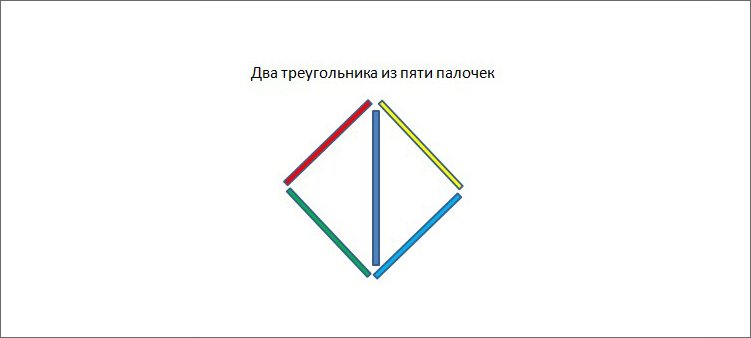
About two squares of seven.

We get three squares.

Unfold the arrow (watch the color of the sticks).
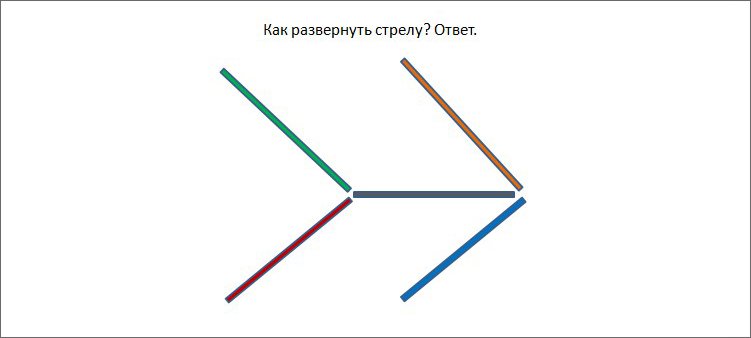
Turn the fish.
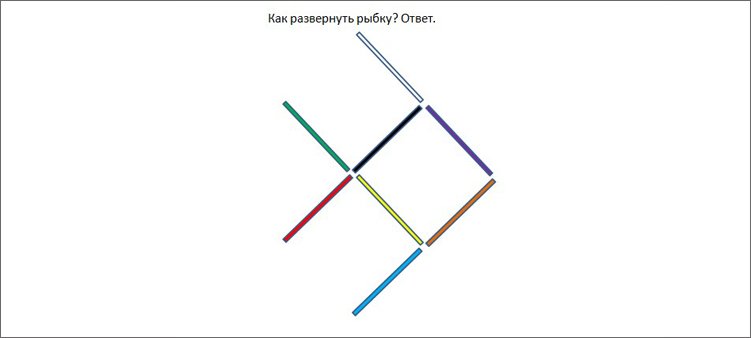
And about two equilateral triangles.
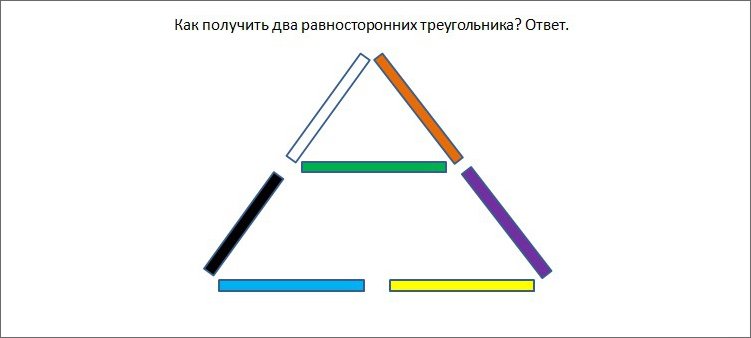
And recently discovered this video on the Internet. It has completely different exercises. We tried, while it turns out with difficulty. Well, we will train. Look, maybe you will come in handy?
Dare! Engage! Grow with your children. Try these "golden" exercises. The results boast in the comments!
Thank you for your attention!
And I am waiting for a visit again! Here you are always welcome!
In this section of the Razumeikin website, exercises are collected for children of 9-10 years old, which will help the child to broaden his horizons and will complement classes in school subjects. When developing a set of tasks for schoolchildren, our specialists tried to make them not only as understandable and fascinating as possible, but also really useful in practical terms.
The “Development” block presents interesting tasks for children of 9-10 years old, contributing to the improvement of logical and spatial thinking, memory, attention. All these skills help to simplify the process of mastering the school curriculum. Assignments tests in the “Development” block are built in the form of an interesting computer online game for children of 9-10 years old. Doing them, small students develop skills in counting and reading and strive to learn something new.
Interesting and interesting tasks for children of 9 years old in the “Education” block will help schoolchildren to consolidate the knowledge they received in primary school. The exercises presented here correspond to the tasks encountered in the attestation trials. By consistently performing the test tasks for children of 9-10 years old, prepared by our specialists, the guys will be able to:
- Prepare for exams in mathematics, Russian language, reading, the world around.
- Recall literary works, passed in elementary school.
- To practice solving problems of increased complexity in mathematics and the Russian language.
- Refresh the themes that have been studied in the subject "The World".
For most of the problem questions for children of 9 years old, we have provided a detailed explanation of the solution. It is given to the child if the answer given to them was incorrect or incomplete. The "Science" block includes entertaining children's games and tasks for 10 years, coping with which the child learns about chemical elements, structural features of substances, air pressure, the refraction of sunlight, studies fascinating facts about our planet, etc. In most exercises Provides background information that we have outlined in an accessible form. After a preliminary explanation of the game assignment, children of 9-10 years old are invited to begin its implementation.
A few words about the presentation of material
So that small students can learn the information in the process of classes, for each exercise for children of 10 years, Razumeikin website experts prepared thematic pictures and voiced text. We are convinced that such an approach will allow us to better learn the material. For many interesting test games for children of 10 years, we have prepared educational videos that will help to cope with online tasks.
How are the results evaluated?
Coping with the test tasks, children of 10 years receive awards online: cups, medals, etc. They help to increase the interest of the student to self-study. Most of the exercises are evaluated depending on what attempt the student gave the correct answer.
In this case, the child has the opportunity to return to completed tasks, for example, to improve their own results.
To determine the strengths and weaknesses in the development of children 9 years old, we advise you to pass online tests before performing cognitive game tasks. The results will help to understand what topics you need to stay in more detail.
- Home decor for the new year
- Summary of literacy classes for children of the preparatory to school group "Sound and the letter Y"
- Voicing consonants: examples
- Algorithm for solving the ege on the Russian language
- · · Speech therapy commission in children
- Lexical theme: "Animals of hot countries"
- Recommendations for the development of coherent speech in preschool children

 Live journal
Live journal Facebook
Facebook Twitter
Twitter